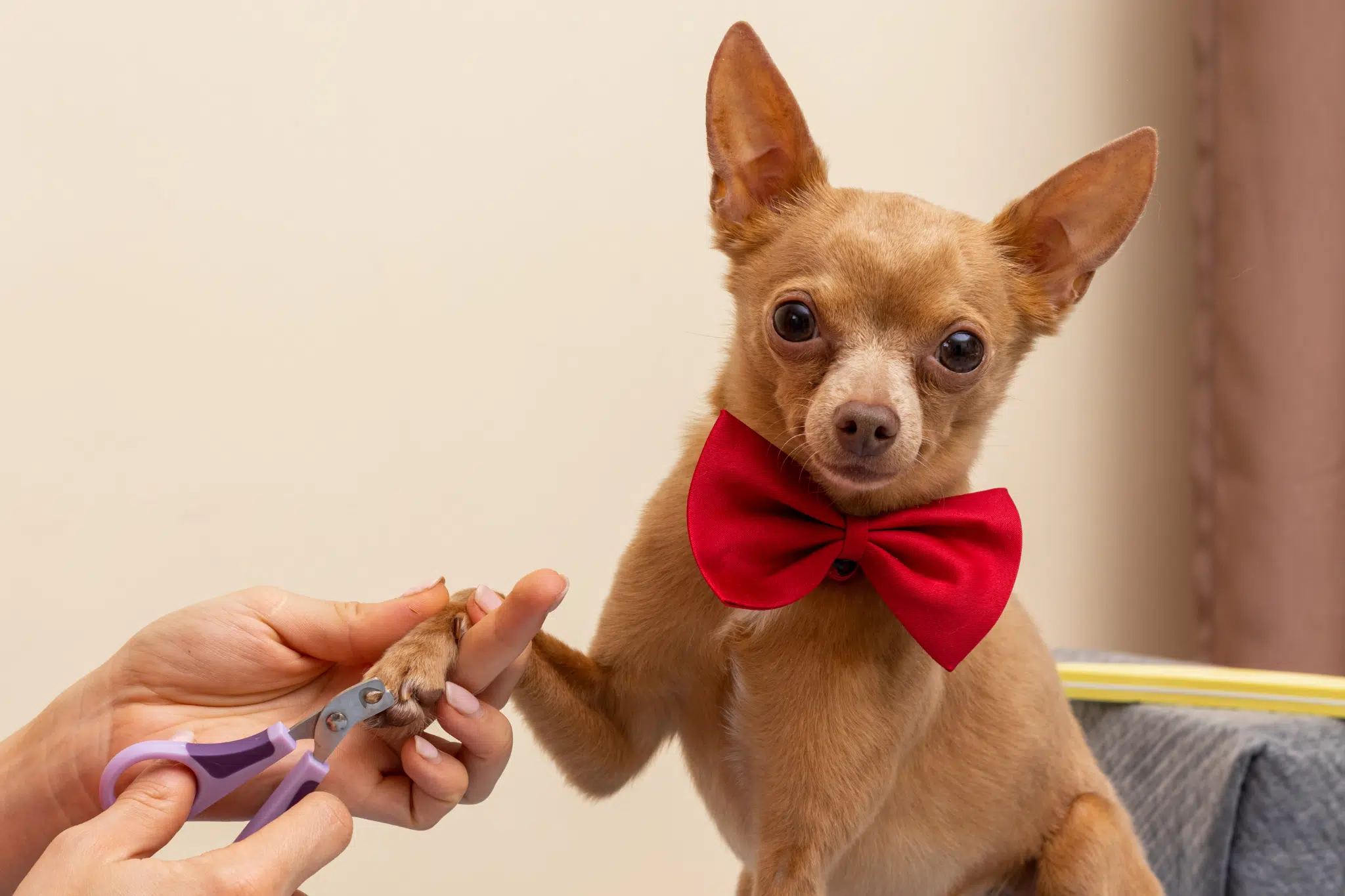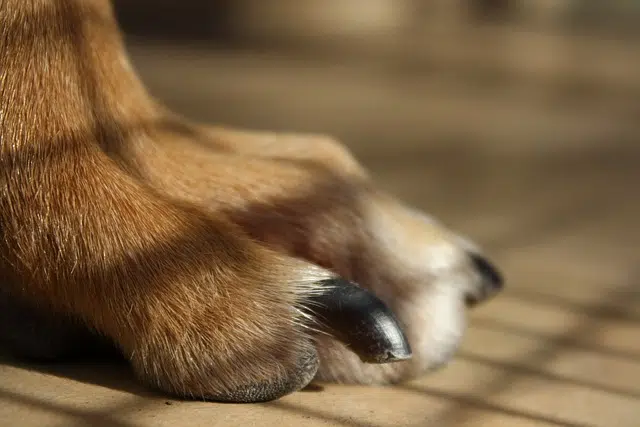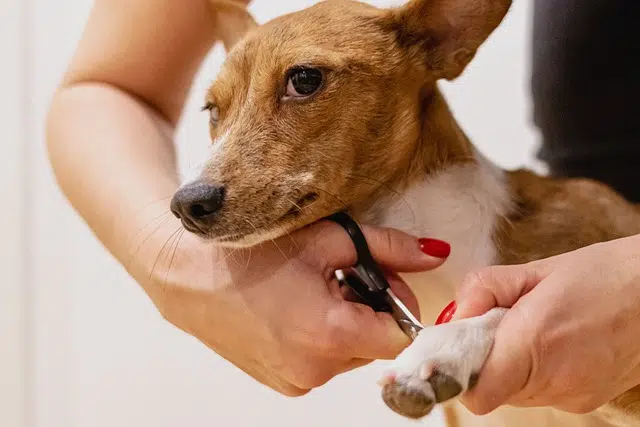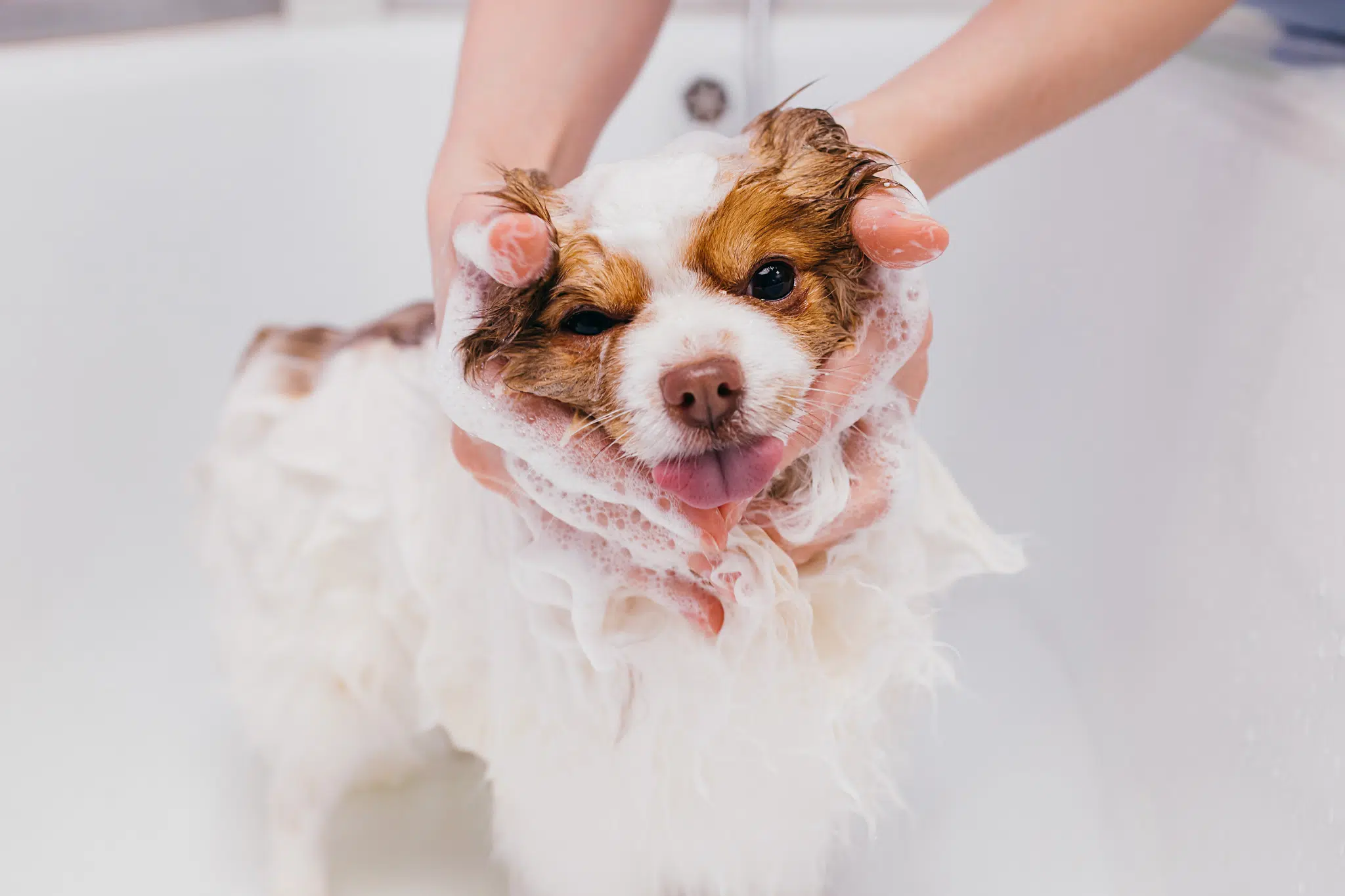Wondering how to cut dog nails at home? Want to avoid the cost of professional groomers? As a dog owner, you want nothing but the best for your pet. And keeping your pet’s nails trimmed and healthy is a vital part of their well-being. Trimming dog nails not only keeps them comfortable but also prevents health issues such as nail splitting, pain, and infections.
But let’s face it, cutting your dog’s nails could be a challenge. Some dogs may not like having their paws handled, while others dogs may have dark nails that make it hard to see where the quick is. And if you accidentally cut dog nails too short, it can result in pain and even bleeding.
In this article, we’ll provide you with practical tips and techniques on how to cut dog nails without hurting them. With the right tools, preparation, and technique, you’ll be able to trim your dog’s nails with confidence and ease.
Understand Your Dog’s Nail
Before we delve into how to cut dog nails, it’s essential you know about the structure of your dog’s nails. Your dog’s nail features a hard outer shell and a soft, inner core called the quick which is composed of blood vessels and nerves. While the quick is visible on light-colored and white nails only, it can be challenging to see on dark-colored nails. It is essential to locate the quick before trimming your dog’s nails as cutting it can cause bleeding and discomfort.
Different breeds of dogs can have varying nail shapes, such as curved or straight nails. For instance, breeds like Greyhounds, Dobermans, and Rottweilers often have short and straight nails, while Poodles and Bichon Frises have curly, long nails that are difficult to trim. The shape of a dog’s nail can also differ, with the classic “hook” shape being the most common, and Greyhounds having a shorter and more curved “cat claw” shape. Meanwhile, other breeds, such as the Afghan Hound, may have oval-shaped nails.
So how long should your dog’s nails be? Ideally, your dog’s nails should just touch the ground when they stand. If your dog’s claws can be heard clicking on the hard surfaces or floor, it is time that you cut them. Remember, overgrown dog nails can cause pain and even irritation.
Meet: Schapendoes
How to Cut Dog Nails; The Tools You’ll Need
Having the proper tools is important for safely and effectively cutting your dog’s nails. There are several tools available that can be used to trim your dog’s nails, including clippers, and grinders.
Clippers

Use a clipper for a proper cut
If you are looking at how to cut dog nails quickly, clippers are a great option but care must be taken not to cut the quick. Clippers come in different types and sizes; scissor-style nail clippers often operate similarly to normal scissors, whereas guillotine-style nail clippers often have a tiny hole into which the nail is inserted before being cut.
Grinders
Grinders are an excellent option for dogs with hard, thick nails. As the nail is gently filed down by grinders, it is less likely that the dog’s quick will be cut. Nail grinders for dogs, however, can be more time-consuming than clippers but offer a gentler way to trim your dog’s nails.
Styptic Powder
No matter how much you be careful, sometimes the quick can be cut accidentally. This is when the styptic powder becomes useful. Styptic powder is a powder made from a natural mineral that helps to stop bleeding when applied to a cut surface.
When selecting tools to trim your dog’s nails, it’s essential to choose tools that are safe, comfortable, and easy to use. Also, you need to consider your dog’s specific needs and preferences. For example, if your dog is anxious or fearful of clippers, a grinder may be a better option.
Preparing Your Dog for Nail Trimming
It can be difficult to get your dog ready for nail trimming, particularly if they’re a little nervous about it. However, with a few pointers and tricks, you can make the experience less stressful and more relaxing for both you and your fur baby.
Get them used to the tools
First things first, get your own dog comfortable and accustomed to the tools you’ll be using to trim its nails. Allow them to sniff and investigate the dog nail clippers or grinder, so they know what to expect. This will make them feel more at ease during the real trimming procedure.
Practice handling their paws
Next, practice handling your dog’s toes and paws regularly. During playtime or while cuddling older dogs, you can do this by tenderly holding and massaging their paws. This helps them become more accustomed to having their toes and paws touched and held, making nail trimming less intimidating.
Use positive reinforcement
Positive reinforcement is also a great tool to help your dog feel more at ease during nail trims. Give them plenty of praise and love while rewarding them with their preferred treat or toy. As a result, it will be much simpler for your dog to associate nail trimming with pleasant encounters.
Take it slow
Lastly, take your time and go slow. It’s best to start by only pulling out one nail or two nails at a time if your dog is feeling especially anxious. Increase the number of nails you trim gradually as your furry friend becomes more accustomed to the procedure.
While there is no one best way to trim dog nails, by following these tips, you can help your dog feel more relaxed and comfortable during nail trims.
Meet: Schipperke
How to safely Cut Dog Nails; Step-by-Step Instructions
Cutting your dog’s nails is an important part of their grooming routine, but it can be a daunting and painful task if you don’t know where to start. For those looking for some help on how to cut dog nails, here’s a step-by-step guide to safely and effectively trim your dog’s nails using clippers or a grinder.
Using Clippers
- Get the right clippers for your dog’s size as small clippers are suitable for small breeds, while large clippers work best for larger dogs.
- Position your dog comfortably and gently hold their paw in one hand.
- Identify the quick or the pink or red line in light-colored nails.
- Position the clippers just below the quick and clip off the tip of the nail in one smooth motion.
- Repeat the procedure for every nail, keeping in mind to stop if your dog becomes agitated or anxious.
Using a Grinder
- Get the right grinder for your dog’s nail size and strength. Cordless grinders are best for smaller dogs, while corded grinders are more powerful and suitable for larger breeds.
- Allow your dog to sniff the grinder to help them get used to the sound and vibrations before using it.
- Sit your dog down in a comfortable spot, and hold their paw in one hand while holding the grinder in the other.
- Turn on the grinder and gently touch it to the tip of the nail, gradually grinding away small amounts of the nail at a time.
- Stop grinding to prevent hitting the quick if you notice a tiny black dot in the middle of the nail.
- Repeat for all nails, taking breaks if necessary.
No matter how you choose to cut your dog’s nails, remember to take your time and prioritize your dog’s comfort and safety throughout the process.
What to Do if You Accidentally Cut Your Dog’s Nails Too Short?
Accidentally cutting your dog’s nails too short can be a painful experience for your furry friend as it can cause bleeding and discomfort. However, if it happens, don’t panic. Here’s what you can do.
- Stay calm and reassure your dog. Talk to them in a soothing voice and offer them treats or toys to distract them from the pain.
- Apply cornstarch or styptic powder to the nail. This helps to stop the bleeding by coagulating the blood.
- For a few minutes, press a fresh towel or piece of gauze against the nail and apply gentle pressure to the nail to help the bleeding stop. You might need to seek veterinary treatment if the bleeding continues after a few minutes.
- Over the next few days, keep a watch on the nail. If your dog seems to be in pain, or if the nail looks swollen or infected, you should contact your veterinarian.
Remember to be patient and gentle when trimming your dog’s nails to either avoid cutting or accidentally cutting them too short in the first place. If you’re unsure about how to cut dog nails, you can always consult your veterinarian or a trained dog groomer for advice
Meet: Scottish Deerhound
Additional Tips for Trimming Your Dog’s Nails
Use a sharp tool: Whether you’re using clippers or a grinder, make sure your tool is sharp. Dull tools can cause the nail to splinter or tear, which can be painful for your dog.
Try a scratchboard: If your dog is resistant to having their nails trimmed, consider using a scratchboard. This is a rough surface that your dog’s feet can scratch against, which can help naturally file down their nails.
Schedule regular nail trimmings: To maintain your dog’s nails at a healthy length, try to trim them every 4-6 weeks. The more often you clip your dog’s nails, the easier the process will become for both you and your dog.
Final Thoughts; How to Cut Dog Nails Without Hurting Them
In sum, routine nail care for your dog is crucial to their general health and well-being. While it can be a challenging and nerve-wracking process, following the tips outlined in this article on how to cut dog nails can help make it easier and safer for both you and your pet.
By taking the time to understand your dog’s nails, gathering the right tools, and preparing your pup for the experience, you’ll be well on your way to a successful dog nail trimming too. And let’s not forget, patience is key. Take it slow, and reward your pup with some treats along the way. With a little bit of practice, you can master the art of cutting your dog’s nails without hurting them.
So go ahead, get those clippers out, and show your furry companion some love!
Interesting Reads:









Get involved!
Comments